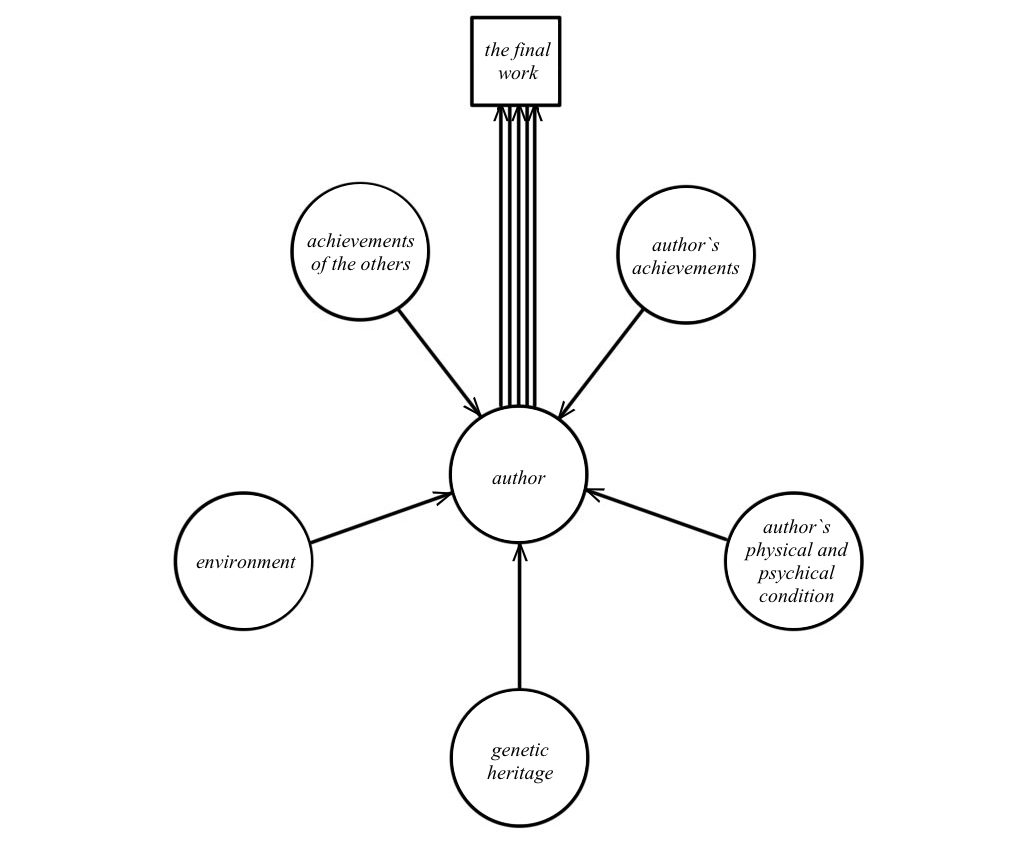The question of the author, authorship and making of the work!
When we observe the work of an author, what do we first learn about this work? The first basic informations that we learn about this work is: the title of the work, the name of the author, the date of making of the work. Very often the name of author comes first, and after this information we learn the other facts. But is this the complete information about this work? Is this work, from the beginning until the end, the author’s own idea and the work? Is he/she (the author) really the only author of this work? Does the author have a true right to call this work his own? It is doubtful. The maker is never the full author of the work! Why?

If we were to try to make somebody’s complete idea or work, then he/she would first be forced to completely erase all of his/her knowledge and previous experiences that he/she has aquired from others and of course the information that he/she got from the genetic heritage as well. This would only be possible to do with a machine, because every human being would die at the moment of the erasure. Nevertheless, even if the machine got its memory erased, it wouldn’t be in function anymore. What we learn from this explanation is that each of us is influenced, more or less, by the achievements of others who made things before us. In order to make a work, at least one, some or all of the points listed below (diagram) are always included, that are already achievements of others through history :
– the alphabet (if the work is or has to do with words).
– numbers (if the work is or has to do with numbers, counting, measuring).
– notes or sounds (if the work is or has to do with a melody or composition).
– movements (if the work is or has to do with a dance form).
– materials (if the work is or has to do with a surface or object).
– machines with all parts and the energy which keeps the machine working (if the work has to do with the machine, or if its the product of the machine, or is a machine itself).
Do these examples not give us enough facts to contemplate or redefine the relation between the work and the Author of the work? One work is never a complete work of an author, but only partially his/her merit.
FILOART 1984